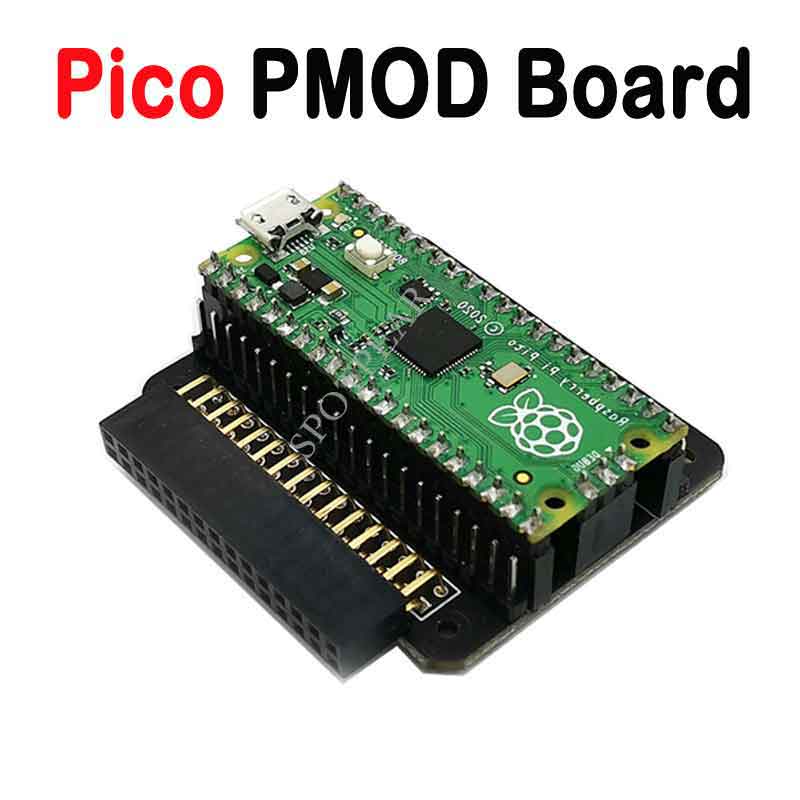- sales/support
Google Chat: zj734465502@gmail.com
- sales
+86-0755-88291180
- sales01
sales@spotpear.com
- sales02
dragon_manager@163.com
- support
tech-support@spotpear.com
- CEO-Complaints
zhoujie@spotpear.com
- sales/support
WhatsApp:13246739196
Raspberry Pi Pico PMOD Expansion Board User Guide
How to Use
| DAPLink | Pico |
| GND | GND |
| PA9/UART1_TX | GP17/UART0_RX |
| PA10/UART1_RX | GP16/UART0_TX |
under Linux, you can use the minicom or picocom to open the serial port, for example:
$sudo apt install minicom
$minicom -b 115200 -o -D /dev/ttyACM0
$sudo apt install picocom
$picocom -b 115200 /dev/ttyACM0
SWD
Pico's onchiprom program implements a USB disk with drag-and-drop burning function, However, in some development scenarios, if you need to frequently modify the code and test, you need to repeatedly power down Pico, hold down the button and power up again, and wait for the USB enumeration to complete before you can drag and drop, which is a slightly tedious process. In fact, the Pico can be programmed & debugged through the SWD interface with the openocd, no need to re-power the Pico, just enter a command to complete, the detail is described as follows
- install openocd
$ cd ~/pico
$ sudo apt install automake autoconf build-essential texinfo libtool libftdi-dev libusb-1.0-0-
dev
$ git clone https://github.com/raspberrypi/openocd.git --recursive --branch rp2040 --depth=1
$ cd openocd
$ ./bootstrap
$ ./configure --enable-cmsis-dap
$ make -j4
$ sudo make install
- This repository has wrapped the command into scripts, after importing the environments variables, you can call the script in any path, note that the format of the burn suffix is
hexorbin, not the drag and dropuf2file
$cd pico-lab/tools
$. ./env.sh
$dfw xxx.hex/xxx.binHow to Compile
$cd tools && source env.sh && cd -
$cd software/infones
$mkdir -p build && cd build
$cmake ..
$make -j
$dfw infones/pico_infones.bin
$dreset



